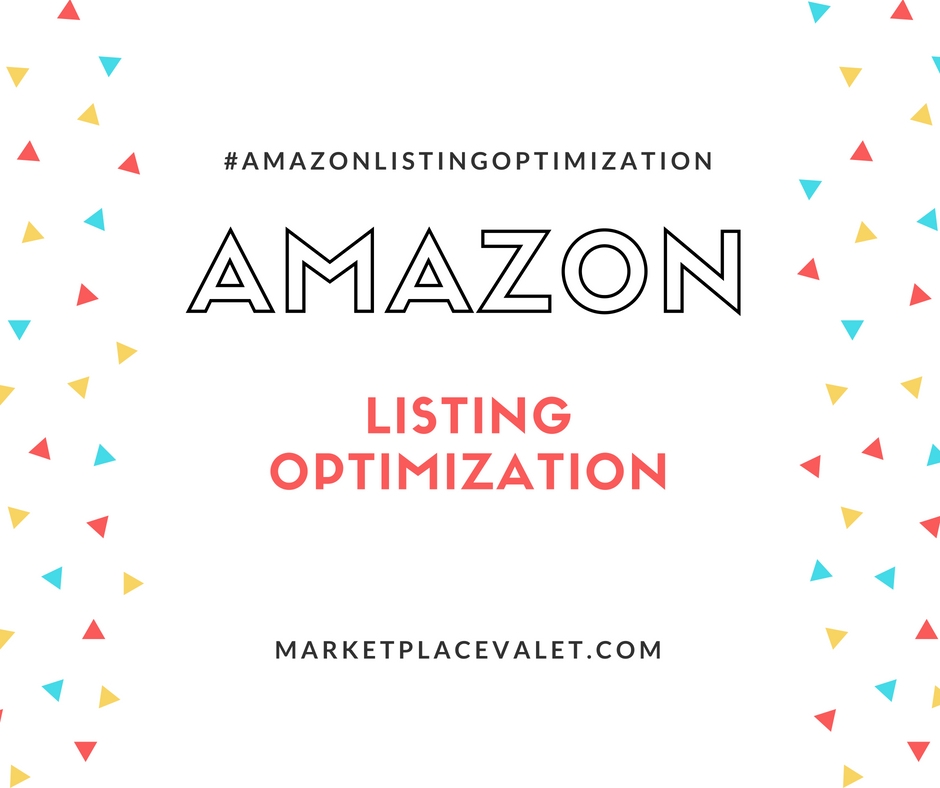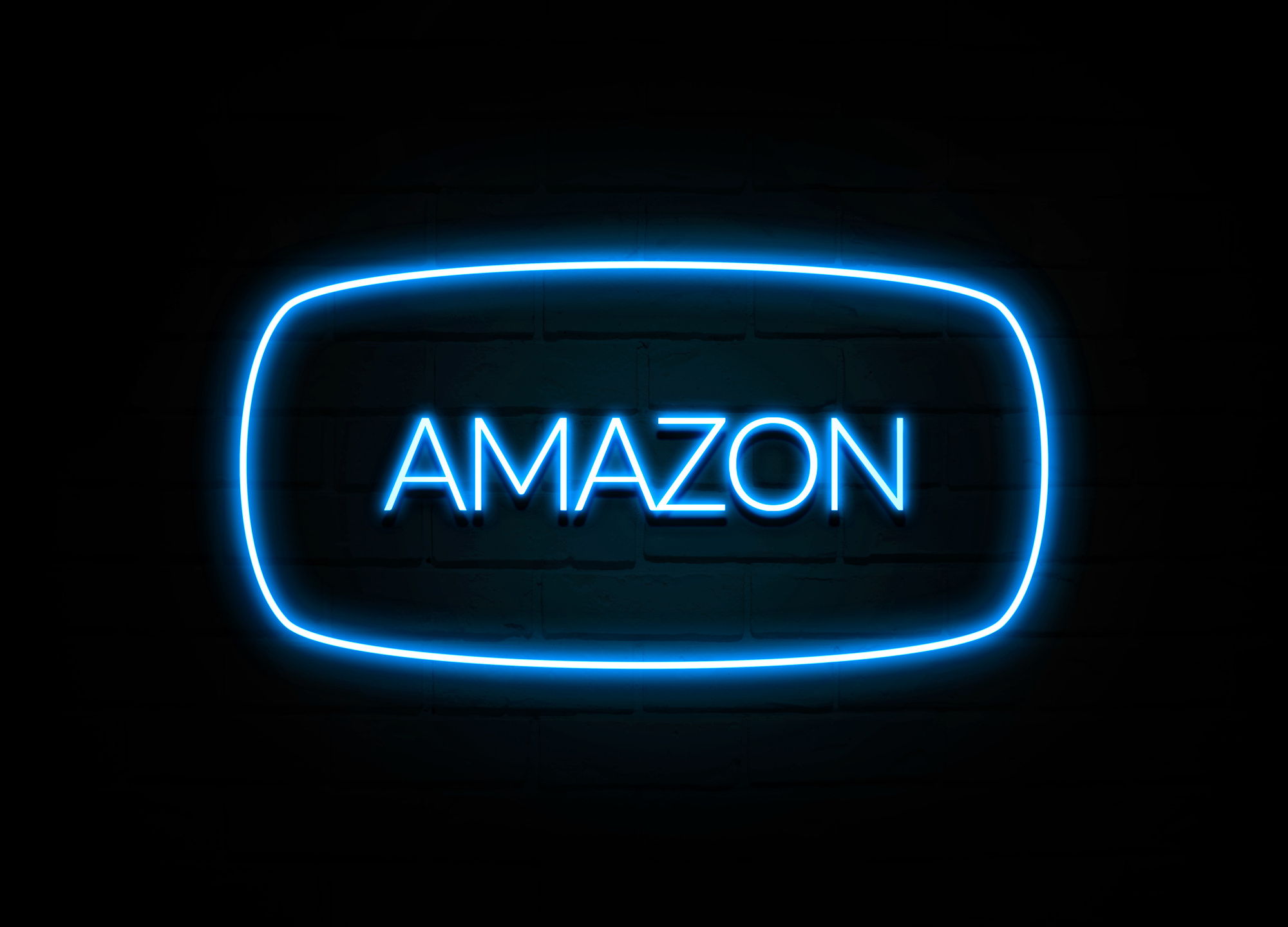


Optimizing your Amazon product listings, aka Amazon Listing Optimization, leads to big boosts in sales.
Better ranking means more organic traffic to your listing, turning into more sales! The faster your rate of sales, shows Amazon’s A9 Algorithm the momentum your listing has over competitors. So Amazon will want to show your product page more often.
This post gives you the tools and fundamentals to begin optimizing your own listings, just like the professionals.
An Amazon Expert’s Guide to Amazon Listing Optimization
Are you an Amazon Seller?
Yeah? Great. With hundreds of millions of monthly visitors and over 100 million Prime members, it is the quintessential place to be for an online retailer.
Amazon has become the defacto search engine for products. So showing up at the top of the search results is big business. And how exactly do those products get there? Top ranking products in the search results get lots of sales, and they continue to get sales which keep them at the top. Additionally, they show up in customer searches because the content, copy, and structure of the product detail pages is consistently answering the questions a customer has.
So the real reason you are here, how do you score better rankings and increase sales for your listings?
The answer = Amazon Listing Optmiization
A9: An Overview – The Algorithm for Amazon’s Listing Optimization
In the same manner that Google has to return relevant results to search query, Amazon needs to rank products based on customer searches.
The technology and software behind that process is called A9, and if you’ve ever looked up a product on Amazon, you’ve interacted with it.
Amazon’s Official Comment on A9
“The better we understand the meaning of a query, the better we can help customers find the products they want. So we focus on the words and the intent behind those words. When a customer tells us they are looking for “Harry Potter in books”, we distinguish in their query the title: “Harry Potter” from the category information: “in books”. “ – Amazon
It is in Amazon’s best interest for A9 to deliver the most relevant results.
But how does a seller work with A9?
The overview states,
“Once we determine which items are good matches to the customer’s query, our ranking algorithms score them to present the most relevant results to the user…Our catalog’s structured data provides us with many such relevance features and we learn from past search patterns and adapt to what is important to our customers.”
Fundamentally, Amazon is a search engine; just not exactly like google.
What’s the difference? Amazon is a commerce platform, with a focus on products that customers want to buy, rather than what content answers the query.
The subtle nuance is why optimizing an Amazon product detail page is different than say your SEO efforts for search engines.
Amazon Product Listing Optimization: Keywords and Rankings
Keywords are essential to helping customers find your products. The winning strategy is to figure out which keywords your potential customers are using in search that lead to the most conversions for the product in your niche.
You should always have some kind of keyword strategy – those that describe your product and any related terms.
The methodology for picking keywords relies on the same methods used for SEO on search engines, and with help from tools like SEMrush, Google Keyword Planner Tool, or BuzzSumo , you will be able to easily identify popular terms.
To increase the likelihood of your product being found in searches, consider some of these other methods for researching keywords:
-
Mimic Competitor Listings– Look at top seller’s titles, descriptions, and bullet points. Do you see any keywords jumping off the page at you?
-
Amazon autocomplete – as you begin to type a keyword or phrase (for example, “blanket” if that’s your product) watch the suggestions Amazon shows you. The suggestions are already proven popular customer searches – thus a proven winner.
Frontend vs Backend Keywords
There are two paths to adding keywords to your listings on Amazon.
Frontend and Backend.
Frontend keywords are what the customer is actually able to see on Amazon, they show up on your product detail page in your product title, description, and features.
Backend Keywords are those that are entered the product creation process in seller central. Unseen by customers, but they will help your listing in search results.
Amazon Listing Optimization: How to Use Backend Keywords
Amazon states, “these should only include generic words that enhance the discoverability of your product,” and recommends the following best practices:
-
Don’t include product identifiers such as brand names, product names, ASINs, etc.
-
Don’t provide inaccurate or misleading information, including the wrong product category, out-of-context words, etc.
-
Put search terms in the most logical order
-
Don’t include statements that are temporarily true (ex. “New”, “on sale”)
-
Don’t include subjective comments
-
Don’t use punctuation in keywords
-
Don’t add common misspellings or variants
-
Abbreviations, alternate names, key characters (for books, etc.) can be included
Regardless of how good your keywords are, always choose the proper category for your product, or your entire product listing optimization efforts will have been in vain.
Amazon Listing Optimization – Copy
Now let’s think about those frontend keywords.
These will be strategically dispersed around the product detail page.
The best detail pages include:
-
A keyword-rich title
-
5 Bullet Point Benefits- Highlight how your product helps the customer/ solves their problem.
-
A detailed description of the product and features
-
A+ Content (if you have Brand Registry)
Product Title
PAY ATTENTION- The title is very important.
To maximize the effectiveness of your title, incorporate as many keywords and phrases as possible, while still making it readable.
Titles can be 200 characters long (including spaces and some categories may have a different max). Use all of those characters.
Key Details: Brand, Color, Size, Quantity (if multi pack or bundle), and any distinguishing features.
More on Amazon Listing Optimization
Our clients always ask us about the title length.
Short and sweet? Or a mile long?
Frankly you will see both on Amazon. It has always been our policy to use long form titles that utilize every character.
Here are Amazon’s own recommendations
-
Capitalize the first letter of every word
-
Spell out measurements
-
Numbers should be written in numerals (8 rather than eight)
-
Spell out the word “and”
-
Size should not be included unless it’s a relevant detail
-
Do not list the color unless it comes in multiple
Amazon Listing Optimization: Product Benefits
The bullet points, your products BENEFITS, are your 30 second elevator pitch to the customer. It is the exactly where the customers eye flow goes after viewing your products’ images.
It’s like a 30 second elevator pitch because you need to grab the customer’s attention and describe how your product makes their life better, answers their questions, or solves their problem. And this has to happen almost before the customer is able to blink.
We will often capitalize the first few words of each bullet point just for the people that are likely “skimming” the content.
Optimizing Amazon’s Product Listings
Please note that most customers don’t scroll past the fold, and if they do it’s to read the reviews. All pertinent information that needs to get to the customer needs to be in the title and bullet points.
What Amazon says about bullets
-
Use keywords in each bullet point
-
Include all major features – and how they benefit customers
-
Put the most important points and features at the top of the list
-
Address everything that comes in the package
-
Any information on settings, controls, etc.
-
Include care instructions
-
Product size or dimensions
-
Warranties or product guarantees
Listing Optimization- Product Descriptions
The product description is the place to tell customers your story and elements of your brand. It is also the place to elaborate on your products features, benefits and other key characteristics.
Don’t hold back here. This is not the time to be humble. Tell customers why your product is the best. Highlight any press or awards as well. Make note of any popular retailers that carry your brand.
While the bullet points are like your digital sales people screaming out at the customer to CONVERT and click Buy Now, the description is a great place to take your time and write our more long-form content. Think like Charles Dickens and you are getting paid per word. Be sure to include those relevant keywords and phrases.
Amazon Listing Optimization… look at Competitors
Steve Jobs was notorious for this. Don’t reinvent the wheel. See who has a great wheel already, and make it better. Basically, what this means is to take a look at your competitors amazon listings.
How do you beat your competition? Troll their reviews for common problems & complaints. Then take the opportunity to address those head on in your description, defining how your product is superior to the competition in those regards and won’t cause the same problems.
Product Description Run Down:
-
Have you filled out this section?
-
Are you addressing customer pain points?
-
Have you added appropriate keywords?
-
Are you including all of the features?
-
Make sure that the content you use in this description is unique and not copied from your own website. You wouldn’t want google to recognize this page as the true source for the content and see your personal website as duplicate content.
See what Amazon has to say about writing a product description here.
Amazon Listing Optimization- Glorious Product Reviews
While Amazon doesn’t declare reviews as a true ranking factor directly, positive reviews absolutely contribute to Click Through Rate and Conversions. Just having reviews can lead to an increase of 18%+ boost to sales, while securing 50 or more reviews has shown to cause nearly a 5% increase to your conversion rate.
Building reviews is a process directly linked to sales. It takes time. Don’t fall prey to the “get reviews quick” schemes that exist. Not only will in jeopardize your entire business, it is not sustainable. Instead, consider Amazon’s Early Reviewer Program, and then shoot for a Lightning Deal to boost the exposure early on.
Don’t freak out if you get negative reviews. That is normal. It is impossible to please everybody. And in fact, having some negative reviews has been shown to actually increase conversions and sales. One reason is that one person’s complaint or issue with the product may actually be the exact reason that the next person wants to buy your product.
Example of a Negative Review.
“I didn’t like the bathrobe because it was oversized and heavy. It was much bigger than I anticipated.”
The next customer may be reading this exact complaint and thinking, “EUREKA, I have been looking for heavy oversized bathrobe”.
Optimized Product Images for your Amazon Listing
Professional product photography can make all the difference between a “Hero” or a “Zero” product. People buy with their eyes, and humans process an image 60000 times faster than words. So don’t skimp on this investment for your listing.
If you don’t feel like you can do this yourself, please consider hiring a professional. The expense is ALWAYS worth it.
Amazon.com Product Listing Optimization
The Hero Image – the one that shows up in search results –is the most important, and is the one that must adhere to Amazon’s guidelines.
-
Must be a professional photo; no drawings, illustrations, etc.
-
Must be on a white background
-
Product only; no additional objects in the photo
-
Should fill 85% of the frame
-
For best quality, should be 1000×1000 pixels
-
No text in the image
A total of 9 images can be added, the best listings have at least 4.
-
Action Shot- product in use
-
Several Angles of the product
-
Lifestyle photography- with models, staged with real background
-
Packaging Shot
-
Product Info: ingredients, special warranties or return policies
“Frequently Bought Together” – Amazon Product Listing Optimization
Customers who bought this item also bought…
This is perhaps the most insightful data for a 3P seller that Amazon openly shares with the world.
These sections on the product detail page highlight how customers are shopping, and what they often buy together. So, this is a chance to create a new listing altogether that solves the customers need i.e. a Bundled Listing.
What does that mean?
A bundled listing is when you offer 2 or more unique products in the same listing. Now the customer doesn’t have to actually do 2 separate searches to buy those products, you are solving their problem with just 1 listing. Just like the above example, let’s say you are selling a bathrobe. You notice that customers also bought a pair of slippers whenever they buy one of your bathrobes. AHA. This provides you with valuable insight. Thus, if you create your own pair of slippers, you could then create a listing that includes both a bathrobe and a pair of slippers together. The customer gets exactly what they were searching for, and you now get 2 sales. Win – Win.
Rules for Bundling:
-
The primary item cannot be from the video game, books, movies, DVDs, music or videos categories (though they may be included as secondary products)
-
A bundle may be listed in one category only
-
You cannot modify a bundle once created
To see all of Amazon’s rules, go here
Proper bundling provides a nice boost to sales, and gives your brand additional exposure in the marketplace with a whole new unique listing.
Priced to Sell – Amazon Listing Optimization
Check out this great article posted on the BigCommerce Blog about Amazon Pricing.
Price will absolutely affect ranking factors on Amazon.
Figuring out the right price for your product can depend on how your competition is priced.
Review the top search results for products in your niche, and do a qualitative comparison of their products. If possible, try to assign it a score for Price to Value. For your listing, you want to ensure that a customer perceives this ratio to be lower for your listing than for your competitors.
Ideally, figure out a pricing range for your product based on this analysis.
Test. Test. Test. Rinse and repeat.
Fulfillment by Merchant (FBM) or Fulfillment by Amazon (FBA)
There are a few ways to handle order fulfillment for any Amazon 3P seller.
Do it yourself, or have Amazon do it.
Fulfillment by Amazon means that Amazon will handle all of the ordering processing, pick and pack, packaging, postage, and customer service for you.
All you need to do is manage the process for labeling and shipping your products in to an FBA facility.
You won’t even have to think about the customers, or dealing with a return. Amazon has got you covered there too.
This does come at a cost though. You can check those out with Amazon’s Revenue Calculator
Going the other route, sellers can choose to handle the entire order fulfillment themselves, which is called Fulfillment by Merchant (FBM).
The tradeoff is operational efficiencies and dollars. By keeping the process “in-house” you are choosing to pay yourself of your company for the fulfillment and customer service related activities vs amazon.
It’s up to you to decide which method suites your needs best.
FBA is quite alluring, especially getting the Prime badge, a proven boost to sales. Nowadays, sellers have the ability to keep the Prime badge on listings and still control fulfillment themselves if they qualify for Amazon’s Seller Fulfilled Prime.
Amazon Prime Badge – The External & Operational enhancement for Listing Optimization.
Amazon recently announced over 100 million Prime Members. Whoa.
These are people that love to spend money on Amazon. The average member spends nearly twice as much as the non member.
So for you, that could be access to twice the total sales volume.
Therefore, Prime Eligibility is a rather influential factor in ranking. Getting more sales frequently is exactly the kind of factor that will move your listing to page 1.
Enhanced Brand Content (EBC) for Amazon Listing Optimization
EBC or Enhanced Brand Content is available for product listings if the brand is approved for Amazon’s Brand Registry program.
It’s optional, but does provide you with some great real-estate on the page to add more detailed copy, graphics, videos, comparison charts, and off course – keywords.
Sellers can build the content themselves (free), hire a service like Marketplace Valet ($250-$400 per page), or hire Amazon ($500 to $1500 per page)
Whatever you end up paying, the enhanced brand content is a solid investment. Amazon claims that A+ content can boost sales by 3-10% because of how the additional copy aids search results.
In Conclusion: Amazon Product Listing Optimization
I hope that you enjoyed this post about optimizing your Amazon listing. It takes time to be the best, but you can succeed. Every effort you make towards improving your listing lends you additional Listing Equity. This is valuable digital real estate that we are developing, which can pay dividends for years to come.

